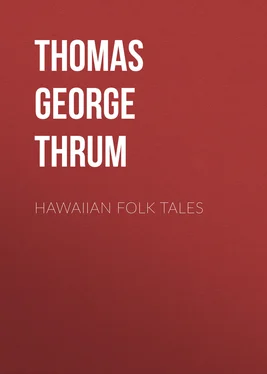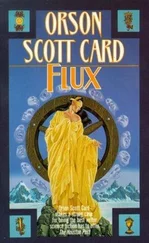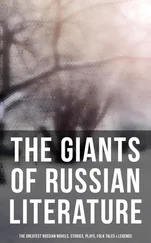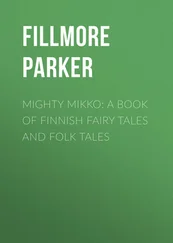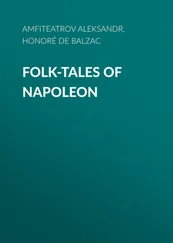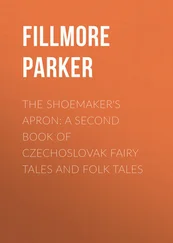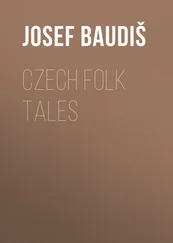Thomas George Thrum - Hawaiian Folk Tales
Здесь есть возможность читать онлайн «Thomas George Thrum - Hawaiian Folk Tales» — ознакомительный отрывок электронной книги совершенно бесплатно, а после прочтения отрывка купить полную версию. В некоторых случаях можно слушать аудио, скачать через торрент в формате fb2 и присутствует краткое содержание. Жанр: Старинная литература, foreign_antique, Сказка, на английском языке. Описание произведения, (предисловие) а так же отзывы посетителей доступны на портале библиотеки ЛибКат.
- Название:Hawaiian Folk Tales
- Автор:
- Жанр:
- Год:неизвестен
- ISBN:нет данных
- Рейтинг книги:4 / 5. Голосов: 1
-
Избранное:Добавить в избранное
- Отзывы:
-
Ваша оценка:
- 80
- 1
- 2
- 3
- 4
- 5
Hawaiian Folk Tales: краткое содержание, описание и аннотация
Предлагаем к чтению аннотацию, описание, краткое содержание или предисловие (зависит от того, что написал сам автор книги «Hawaiian Folk Tales»). Если вы не нашли необходимую информацию о книге — напишите в комментариях, мы постараемся отыскать её.
Hawaiian Folk Tales — читать онлайн ознакомительный отрывок
Ниже представлен текст книги, разбитый по страницам. Система сохранения места последней прочитанной страницы, позволяет с удобством читать онлайн бесплатно книгу «Hawaiian Folk Tales», без необходимости каждый раз заново искать на чём Вы остановились. Поставьте закладку, и сможете в любой момент перейти на страницу, на которой закончили чтение.
Интервал:
Закладка:
When Milu heard of the fame of Lonopuha as a skilful healer, because of those who were afflicted with disease and would have died but for his treatment, he sent his messenger after him. On arriving at Milu’s house, Lonopuha examined and felt of him, and then said, “You will have no sickness, provided you be obedient to my teachings.” He then exercised his art, and under his medical treatment Milu recovered.
Lonopuha then said to him: “I have treated you, and you are well of the internal ailments you suffered under, and only that from without remains. Now, you must build a house of leaves and dwell therein in quietness for a few weeks, to recuperate.” These houses are called pipipi, such being the place to which invalids are moved for convalescent treatment unless something unforeseen should occur.
Upon Milu’s removal thereto, Lonopuha advised him as follows: “O King! you are to dwell in this house according to the length of time directed, in perfect quietness; and should the excitement of sports with attendant loud cheering prevail here, I warn you against these as omens of evil for your death; and I advise you not to loosen the ti leaves of your house to peep out to see the cause, for on the very day you do so, that day you will perish.”
Some two weeks had scarcely passed since the King had been confined in accordance with the kahuna’s instructions, when noises from various directions in proximity to the King’s dwelling were heard, but he regarded the advice of the priest all that day. The cause of the commotion was the appearance of two birds playing in the air, which so excited the people that they kept cheering them all that day.
Three weeks had almost passed when loud cheering was again heard in Waipio, caused by a large bird decorated with very beautiful feathers, which flew out from the clouds and soared proudly over the palis (precipices) of Koaekea and Kaholokuaiwa, and poised gracefully over the people; therefore, they cheered as they pursued it here and there. Milu was much worried thereby, and became so impatient that he could no longer regard the priest’s caution; so he lifted some of the ti leaves of his house to look out at the bird, when instantly it made a thrust at him, striking him under the armpit, whereby his life was taken and he was dead (lilo ai kona ola a make iho la).
The priest saw the bird flying with the liver of Milu; therefore, he followed after it. When it saw that it was pursued, it immediately entered into a sunken rock just above the base of the precipice of Koaekea. As he reached the place, the blood was spattered around where the bird had entered. Taking a piece of garment (pahoola), he soaked it with the blood and returned and placed it in the opening in the body of the dead King and poured healing medicine on the wound, whereby Milu recovered. And the place where the bird entered with Milu’s liver has ever since been called Keakeomilu (the liver of Milu).
A long while afterward, when this death of the King was as nothing (i mea ole), and he recovered as formerly, the priest refrained not from warning him, saying: “You have escaped from this death; there remains for you one other.”
After Milu became convalescent from his recent serious experience, a few months perhaps had elapsed, when the surf at Waipio became very high and was breaking heavily on the beach. This naturally caused much commotion and excitement among the people, as the numerous surf-riders, participating in the sport, would land upon the beach on their surf-boards. Continuous cheering prevailed, and the hilarity rendered Milu so impatient at the restraint put upon him by the priest that he forsook his wise counsel and joined in the exhilarating sport.
Seizing a surf-board he swam out some distance to the selected spot for suitable surfs. Here he let the first and second combers pass him; but watching his opportunity he started with the momentum of the heavier third comber, catching the crest just right. Quartering on the rear of his board, he rode in with majestic swiftness, and landed nicely on the beach amid the cheers and shouts of the people. He then repeated the venture and was riding in as successfully, when, in a moment of careless abandon, at the place where the surfs finish as they break on the beach, he was thrust under and suddenly disappeared, while the surf-board flew from under and was thrown violently upon the shore. The people in amazement beheld the event, and wildly exclaimed: “Alas! Milu is dead! Milu is dead!” With sad wonderment they searched and watched in vain for his body. Thus was seen the result of repeated disobedience.
VII
A Visit to the Spirit Land; Or, The Strange Experience of a Woman in Kona, Hawaii
Kalima had been sick for many weeks, and at last died. Her friends gathered around her with loud cries of grief, and with many expressions of affection and sorrow at their loss they prepared her body for its burial.
The grave was dug, and when everything was ready for the last rites and sad act, husband and friends came to take a final look at the rigid form and ashen face before it was laid away forever in the ground. The old mother sat on the mat-covered ground beside her child, brushing away the intrusive flies with a piece of cocoanut-leaf, and wiping away the tears that slowly rolled down her cheeks. Now and then she would break into a low, heart-rending wail, and tell in a sob-choked, broken voice, how good this her child had always been to her, how her husband loved her, and how her children would never have any one to take her place. “Oh, why,” she cried, “did the gods leave me? I am old and heavy with years; my back is bent and my eyes are getting dark. I cannot work, and am too old and weak to enjoy fishing in the sea, or dancing and feasting under the trees. But this my child loved all these things, and was so happy. Why is she taken and I, so useless, left?” And again that mournful, sob-choked wail broke on the still air, and was borne out to the friends gathered under the trees before the door, and was taken up and repeated until the hardest heart would have softened and melted at the sound. As they sat around on the mats looking at their dead and listening to the old mother, suddenly Kalima moved, took a long breath, and opened her eyes. They were frightened at the miracle, but so happy to have her back again among them.
The old mother raised her hands and eyes to heaven and, with rapt faith on her brown, wrinkled face, exclaimed: “The gods have let her come back! How they must love her!”
Mother, husband, and friends gathered around and rubbed her hands and feet, and did what they could for her comfort. In a few minutes she revived enough to say, “I have something strange to tell you.”
Several days passed before she was strong enough to say more; then calling her relatives and friends about her, she told them the following weird and strange story:
“I died, as you know. I seemed to leave my body and stand beside it, looking down on what was me. The me that was standing there looked like the form I was looking at, only, I was alive and the other was dead. I gazed at my body for a few minutes, then turned and walked away. I left the house and village, and walked on and on to the next village, and there I found crowds of people,—Oh, so many people! The place which I knew as a small village of a few houses was a very large place, with hundreds of houses and thousands of men, women, and children. Some of them I knew and they spoke to me,—although that seemed strange, for I knew they were dead,—but nearly all were strangers. They were all so happy! They seemed not to have a care; nothing to trouble them. Joy was in every face, and happy laughter and bright, loving words were on every tongue.
“I left that village and walked on to the next. I was not tired, for it seemed no trouble to walk. It was the same there; thousands of people, and every one so joyous and happy. Some of these I knew. I spoke to a few people, then went on again. I seemed to be on my way to the volcano,—to Pele’s pit,—and could not stop, much as I wanted to do so.
Читать дальшеИнтервал:
Закладка:
Похожие книги на «Hawaiian Folk Tales»
Представляем Вашему вниманию похожие книги на «Hawaiian Folk Tales» списком для выбора. Мы отобрали схожую по названию и смыслу литературу в надежде предоставить читателям больше вариантов отыскать новые, интересные, ещё непрочитанные произведения.
Обсуждение, отзывы о книге «Hawaiian Folk Tales» и просто собственные мнения читателей. Оставьте ваши комментарии, напишите, что Вы думаете о произведении, его смысле или главных героях. Укажите что конкретно понравилось, а что нет, и почему Вы так считаете.
